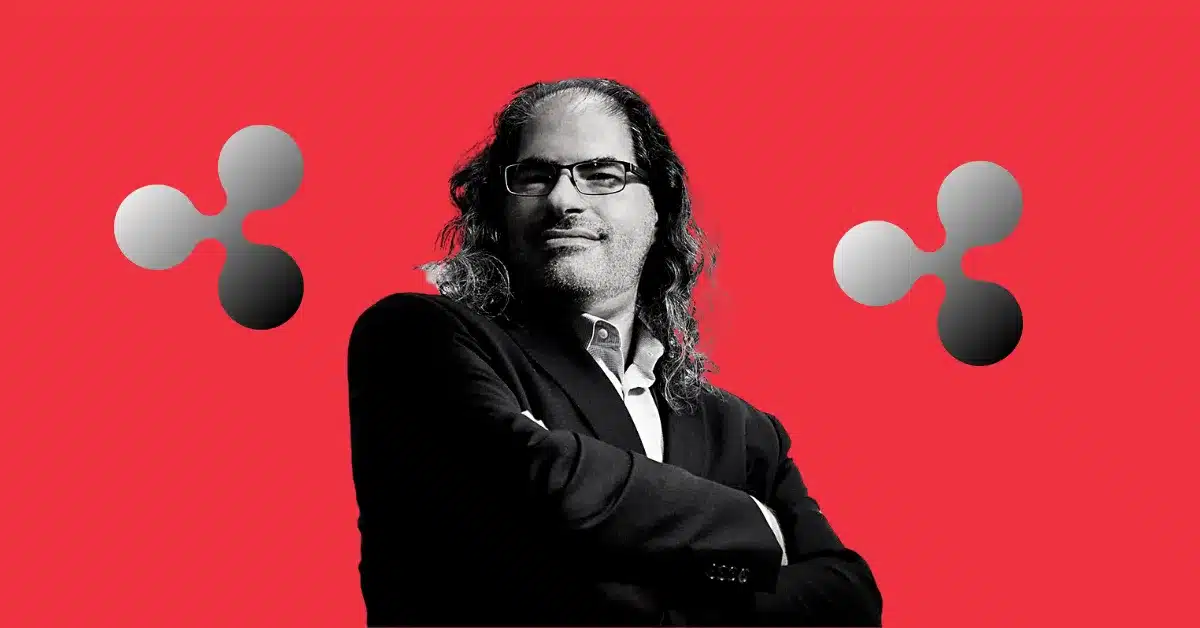- Ripple CTO David Schwartz personally launched a high-capacity XRPL server in New York.
- The hub features top-tier hardware (AMD 9950X, 256GB RAM, 10 Gbps connection) and is nearly production-ready.
- XRPL is surging with 70M+ monthly transactions, 7M+ accounts, and rising DeFi activity.
David Schwartz, long-serving Chief Technology Officer of Ripple, has quietly re-entered the realm of infrastructure development on his own terms. In a move entirely independent of Ripple, Schwartz has deployed a high-capacity server hub in New York designed to support the XRP Ledger (XRPL) with production-level stability.
He shared technical metrics from a recent weekend test run, reporting consistent bandwidth, minimal latency, strong peer connectivity, and negligible disconnection rates over a full day of monitoring.
A brief latency spike affected only a few weaker links, while a minor data gap was attributed to a monitoring glitch. These findings, Schwartz confirmed, prove the system is “nearly production ready” and reaffirm its credibility in XRPL’s infrastructure.
“The tiny drop in network b/w appears to be a monitoring dropout and doesn’t show on the switch port’s monitoring,” Schwartz said.
Here’s the past 24 hours. All good. There is one spike in latency that only affected a few links that were already poor. The tiny drop in network b/w appears to be a monitoring dropout and doesn’t show on the switch port’s monitoring. I think we’re nearly production ready. pic.twitter.com/1GNCqF8EBc
— David ‘JoelKatz’ Schwartz (@JoelKatz) August 17, 2025
Also Read: Teucrium’s CEO Comment About SWIFT and XRP Excites Community – Here’s What Happened
Enterprise-Grade Specs Built for Reliability and Decentralization
The server reflects serious hardware investment, featuring an AMD 9950X processor, 256 GB of RAM, dual NVMe SSDs engineered for speed, and a 10 Gbps unmetered connection operating on Ubuntu LTE in a New York data center.
Schwartz’s vision is clear: to bolster the XRPL network by offering high-uptime support for validators, hubs, and applications. Although reserved slots are allocated for critical infrastructure components, surplus capacity will be made available to the public on a best-effort basis.
Importantly, Schwartz emphasized that this is not a sanctioned Ripple project, but a personal commitment. By maintaining operational independence, he reinforces the principle that no single server should bear the network’s weight, reiterating the ethos of decentralization that underpins XRPL.
Timing Aligned with XRPL Uptick Across the Network
This hub initiative arrives against the backdrop of dramatic network expansion. The XRPL recorded more than 70 million transactions in July, with average daily activity around 1.8 million, and over 13 million transactions in a single week.
The number of accounts has now surpassed seven million, and over one million new wallets were created in 2025 alone. Meanwhile, decentralized finance activity on XRPL is gaining traction: decentralized exchange volume recently climbed from 384 million to 465 million XRP, and AMM transactions rose from 350 million to 408 million XRP.
Conclusion
David Schwartz’s personal deployment of a production-grade XRPL hub is more than a technical gesture; it’s a statement of faith in decentralized infrastructure leadership. As XRPL continues to scale with expanding transactions, wallets, stablecoins, and DeFi use cases, this initiative lays a crucial foundation for the network’s next chapter.
Also Read: XRP Drops Below $3 – Here’s Why the Price is Down Today

